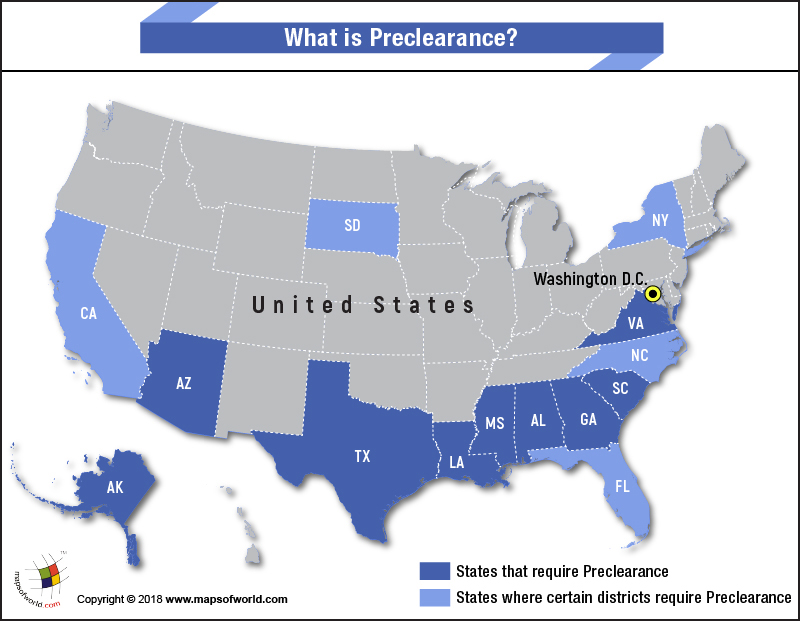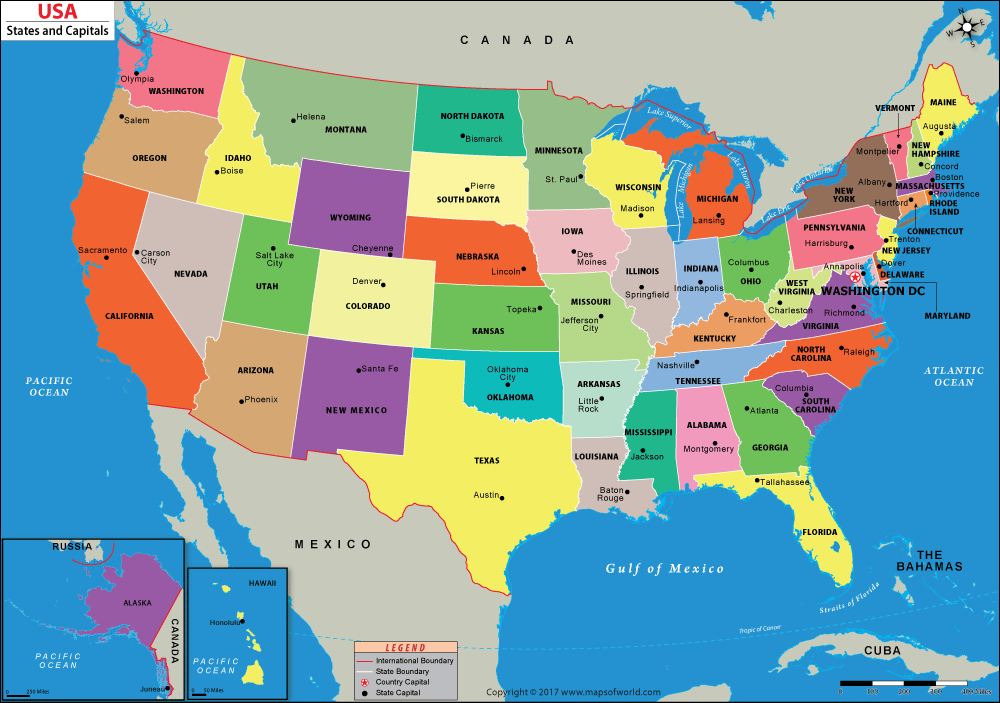What is Preclearance?
 The term preclearance pertains to redrawing of a district where one section of voters are denied a fair and equal opportunity for representation through the electoral process. Redistricting, also known as gerrymandering, has been misused over time. The requirement for obtaining preclearance before affecting voting change was therefore introduced as a preventive measure.
The term preclearance pertains to redrawing of a district where one section of voters are denied a fair and equal opportunity for representation through the electoral process. Redistricting, also known as gerrymandering, has been misused over time. The requirement for obtaining preclearance before affecting voting change was therefore introduced as a preventive measure.
Section 5 of the Voting Rights Act of 1965, states, preapproval for voting changes are required by certain covered states and local jurisdictions. The pre approval must be obtained from the District Court of the District of Columbia or the Attorney General.
Sections 4 and 5 of the Voting Rights Act relating to stipulations for preclearance have been controversial and debated.
Latest ruling that suspends preclearance
On June 25th, 2013, ruling on the Shelby County v. Holder case, the United States Supreme Court deemed unconstitutional the use of coverage formula, as defined under provisions of Section 4(b) of the Voting Rights Act, to determine which jurisdictions require preclearance, unless covered under a separate order under Section 3(c).
The background to preclearance
The Voting Rights Act of 1965 was signed into law by President Lyndon B. Johnson on August 6th, 1965. The Act was a result of an active civil rights movement by the African American community and other minorities, seeking voting rights under a fair and equal participation in the electoral process.
Sections 4 and 5 of the Voting Rights Act are meant to protect minority groups in certain states and jurisdictions where historical discrimination existed based on racial and linguistic lines. Most of the southern states were covered under this Act. The provisions of the Act are meant to protect African Americans, American Indians, Alaskan Natives, Natives of Spanish Heritage, and Asian Americans.
The states that require preclearance before introducing any redistricting changes include Alabama, Georgia, Louisiana, Mississippi, Virginia, Alaska, Arizona, Texas, and South Carolina. Other states where certain districts require preclearance include California, Florida, New York, North Carolina and South Dakota.
The Special Provisions of the Voting Rights Act
Section 5 of the Act was introduced as temporary legislation in 1965 to prevent changes to election procedures and practices in certain covered jurisdictions and applicable for only five years. The elements covered
The special provisions of Section 5 were revisited and extended in 1970, 1975, and 1982. In 2006, it was extended by another twenty-five years.
Department of Justice has specified a non-exhaustive list of changes that require preclearance and include:
- Voter eligibility requirements
- Voting precinct boundaries Redistricting
- Polling place locations
- Registration procedure
- Election procedures
- Election procedures
- Municipal incorporations
- Candidate eligibility
- Referendum procedure
During the decade, the Attorney General has received 4,500 and 5,500 submissions under Section 5 and reviewed voting changes in between 14,000 and 20,000 voting changes, every year. The Attorney General plays the surrogate for the district court and applies the same standards of evaluation and judgment as of the court.
Can voting changes not reviewed under Section 5, be legally challenged?
Voting changes not reviewed under Section 5 are not legally enforceable. The Allen v. State Board Election (1969) outcome allowed any person, organization with standing, or the Attorney General, could challenge the violation of Section 5 in the district court. A three-judge district court panel will determine any such challenges and will ensure the following:
- If a voting change has occurred
- If yes, are conditions of Section 5 met, and has preclearance has been received.
- If not, then what measures can be taken by the court to provide relief.
The outcome of the Lopez v. Monterey case stated that only the United States District Court for the District of Columbia would determine whether or not a voting change was discriminatory, and what remedial measures be taken.
Visit the following to learn more about the USA:
Related Maps:








